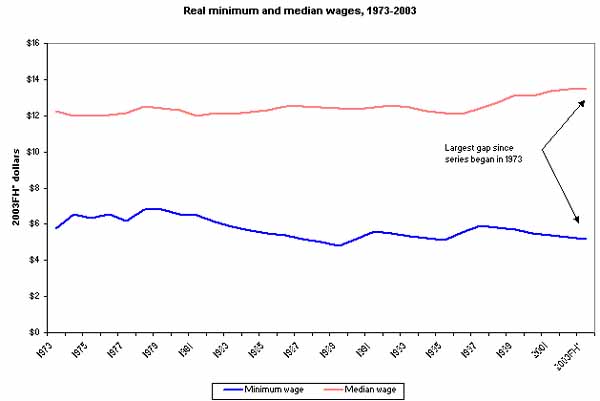Snapshot for October 22, 2003.
The gap between minimum and median wage earners continues to grow
Over the last 30 years, the gap between middle-wage workers and those earning the minimum wage has expanded. Most recently, this gap is at its widest level on record.
Since 1973, the beginning of the data series, the real median wage—the hourly wage of the worker in the middle of the wage scale—has risen by 10%. Conversely, over this same period, there has been a 10% decrease in the real value of the minimum wage.
More recently, the tight labor market of the late 1990s helped raise the real value of the median wage. The minimum wage, however, has not been increased since 1997, and inflation has eroded its value. Thus, a widening gap has emerged between the two wage measures (see figure).

In 1973, the minimum wage relative to the median wage was 46.9%, with the relative value peaking at 54.9% in 1979. Currently at 38.2%, the minimum wage is at its lowest level on record relative to the median wage. Unless Congress acts to bring the minimum wage closer to the wages of other workers, the minimum wage will become an increasingly irrelevant wage floor, failing to support the low-wage workers who depend on it and allowing them to fall further behind the rest of the workforce. Bringing this gap back to its 1979 level, when the two wages were closest, would call for a minimum wage of $7.40.
Today’s snapshot was written by EPI economists Sylvia Allegretto and Jared Bernstein.
Check out the archive for past Economic Snapshots.
